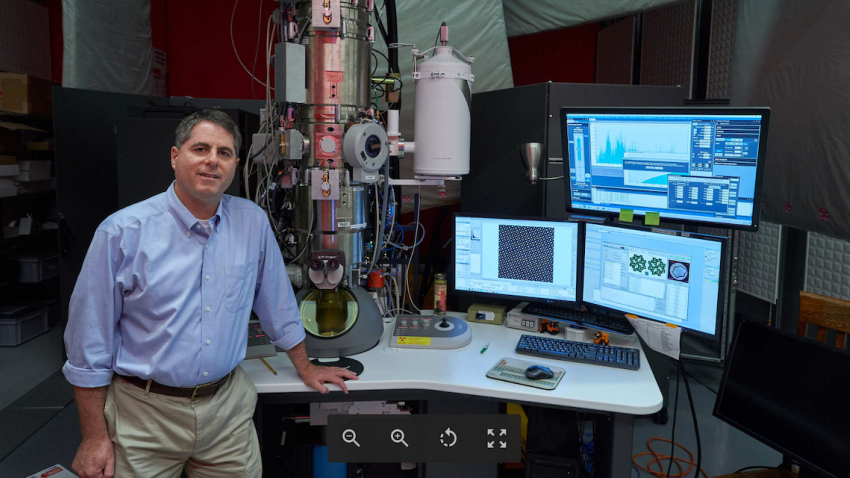Learn Physics.
Speak Engineering.
The ability to do — not simply understand — physics is an essential skill for scientists and engineers striving to advance their fields. We are leaders in a wide range of fields, including biophysics, materials physics, optics and photonics, quantum sciences, plasma physics and renewable energy.
News Highlights
See all-
![superconductor]()
Kourkoutis’ cryo-imaging continues to drive quantum discoveries
A team led by Judy Cha collaborated with the late Lena Kourkoutis to use cryo-electron imaging to study how defects in the microstructure of the nanomaterial tantalum disulfide affects its properties.
-
![]()
There’s two sides to this semiconductor, and many simultaneous functions
A Cornell-led collaboration has developed the first dual-sided – or “dualtronic” – semiconductor that combines photonic and electronic functions simultaneously.
-
![]()
David Muller wins Cowley Medal and Keithley Award
David Muller, professor of applied and engineering physics, has been honored with the 2023 John M. Cowley Medal from the International Federation of Societies for Microscopy and the 2024 Joseph F. Keithley Award for Advances in Measurement Science from the American Physical Society.
-
![]()
Imaging technique reveals first 2D chainmail-like material
An advanced imaging technique developed at Cornell has revealed the first two-dimensional, mechanically interlocked polymer – resembling the links in chainmail – confirming a breakthrough in both material design and electron microscopy.
Upcoming Events
-
![]()
LPS Colloquium: Karol Lang (Texas)
How to Improve a Modern Radiation Treatment of Cancer: A dream? Naivety? Arrogance? … Or a Necessity? About 50% of all cancer patients are subjected to radiation therapy that may be further impr…
-
![]()
LPS Colloquium: Howard Milchberg (Maryland)
Relativistic optics and multi-GeV laser-driven particle accelerators During the past 30-plus years, the remarkable increase in peak laser intensity – greater than six orders of magnitude –…
-
![]()
Special AEP Seminar: Andrea Morello (UNSW Sydney)
Schroedinger cat in a silicon box: quantum information and quantum foundations I will present recent experiments, and exciting new directions, for the use of high-spin nuclei in silicon for quantum in…
-
![]()
Special AEP Seminar: Hadar Steinberg (Hebrew University of Jerusalem)
Universality of Upper Critical Field in the TMD Superconductor Family In transition metal dichalcogenides (TMDs) such as H-NbSe2 an H-TaS2, superconducting properties are retained down to a single lay…
Our Programs
-
Engineering Physics
Combines engineering and physics to solve high-tech problems. Ideal for those interested in applying physics principles to developing innovative technologies.







